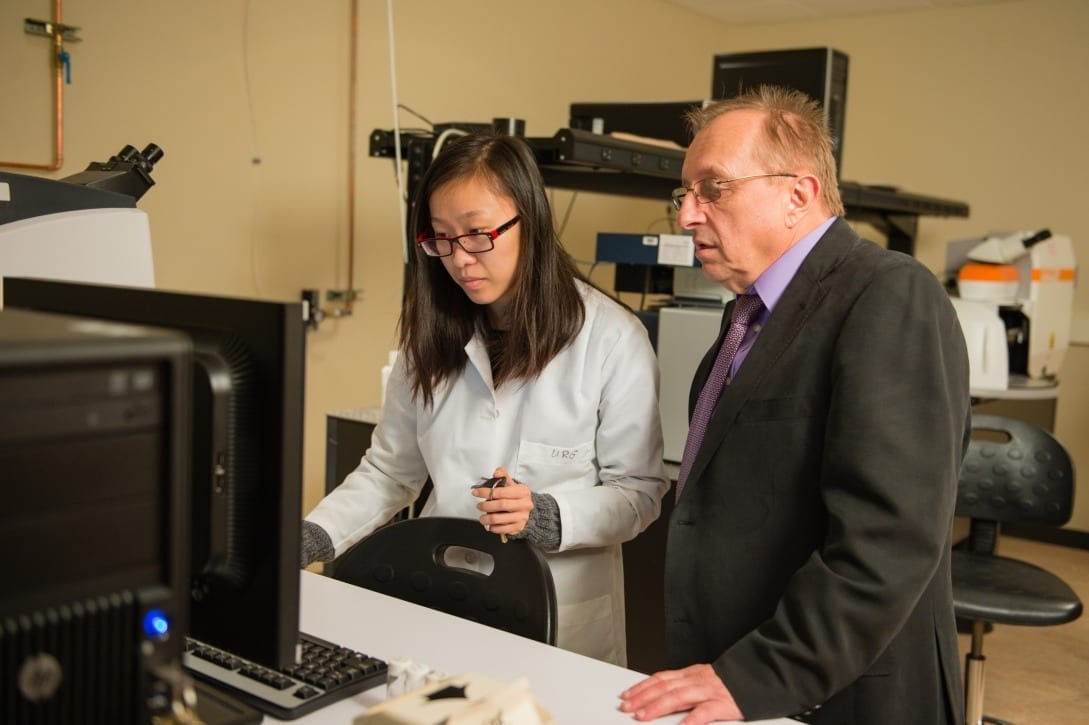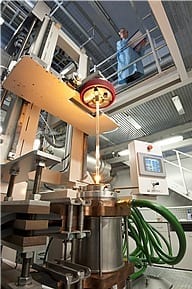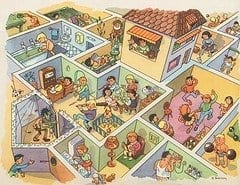
The team calls its biological transistor the “transcriptor.”
When Charles Babbage prototyped the first computing machine in the 19th century, he imagined using mechanical gears and latches to control information. ENIAC, the first modern computer developed in the 1940s, used vacuum tubes and electricity. Today, computers use transistors made from highly engineered semiconducting materials to carry out their logical operations.
And now a team of Stanford University bioengineers has taken computing beyond mechanics and electronics into the living realm of biology. In a paper published March 28 in Science, the team details a biological transistor made from genetic material — DNA and RNA — in place of gears or electrons. The team calls its biological transistor the “transcriptor.”
“Transcriptors are the key component behind amplifying genetic logic — akin to the transistor and electronics,” said Jerome Bonnet, PhD, a postdoctoral scholar in bioengineering and the paper’s lead author.
The creation of the transcriptor allows engineers to compute inside living cells to record, for instance, when cells have been exposed to certain external stimuli or environmental factors, or even to turn on and off cell reproduction as needed.
“Biological computers can be used to study and reprogram living systems, monitor environments and improve cellular therapeutics,” said Drew Endy, PhD, assistant professor of bioengineering and the paper’s senior author.
The biological computer
In electronics, a transistor controls the flow of electrons along a circuit. Similarly, in biologics, a transcriptor controls the flow of a specific protein, RNA polymerase, as it travels along a strand of DNA.
“We have repurposed a group of natural proteins, called integrases, to realize digital control over the flow of RNA polymerase along DNA, which in turn allowed us to engineer amplifying genetic logic,” said Endy.
Using transcriptors, the team has created what are known in electrical engineering as logic gates that can derive true-false answers to virtually any biochemical question that might be posed within a cell.
They refer to their transcriptor-based logic gates as “Boolean Integrase Logic,” or “BIL gates” for short.
Transcriptor-based gates alone do not constitute a computer, but they are the third and final component of a biological computer that could operate within individual living cells.
Despite their outward differences, all modern computers, from ENIAC to Apple, share three basic functions: storing, transmitting and performing logical operations on information.
Last year, Endy and his team made news in delivering the other two core components of a fully functional genetic computer. The first was a type of rewritable digital data storage within DNA. They also developed a mechanism for transmitting genetic information from cell to cell, a sort of biological Internet.
It all adds up to creating a computer inside a living cell.
The Latest Bing News on:
Transcriptor
- Feed has no items.
The Latest Google Headlines on:
Transcriptor
[google_news title=”” keyword=”transcriptor” num_posts=”10″ blurb_length=”0″ show_thumb=”left”] [/vc_column_text]The Latest Bing News on:
Biological transistor
- Bell Labs honors former researcher for 2023 Nobel Prizeon May 1, 2024 at 10:37 pm
The 80-year-old was recognized for discoveries he made while a researcher at Bell Labs in Murray Hill in the 1980s.
- Scientists solve chemical mystery at the interface of biology and technologyon April 30, 2024 at 5:00 pm
At the intersection of biology and technology, researchers are aiming to decipher the cryptic dialects spoken by cells and circuits. With each translation, they bridge the gap between living organisms ...
- Organic electrochemical transistors: Scientists solve chemical mystery at the interface of biology and technologyon April 30, 2024 at 11:22 am
Researchers who want to bridge the divide between biology and technology spend a lot of time thinking about translating between the two different "languages" of those realms.
- Researchers develop low-power artificial neurons mimicking locust brains for obstacle detectionon April 22, 2024 at 10:44 am
In a study researchers have developed ultra-low power artificial neurons capable of obstacle detection by mimicking locust brains ...
- Organic Field-Effect Transistors: The Future of Flexible Electronicson April 18, 2024 at 7:44 am
Unlike conventional transistors that rely on inorganic semiconductors like ... OFETs can be used as chemical and biological sensors, leveraging the sensitivity of organic semiconductors to various ...
- New carbon nanotube transistor enhances sensitivity and resolution of molecule glasseson March 29, 2024 at 9:35 am
Researchers have developed a carbon nanotube (CNT) transistor for molecule glasses ... a precise medical technology capable of controlling biological systems at the molecular level while also ...
- What Nvidia’s new Blackwell chip says about AI’s carbon footprint problemon March 19, 2024 at 12:27 pm
It said it would consider radically different ways of building computer chips in order to do so, including chips that rely on biological neurons for computation instead of silicon transistors.
- Breath sensor made using hybrid biological-silicon electronics (IMAGE)on November 22, 2023 at 11:55 am
Hybrid biological transistors change their electronic behavior in response to gases and other molecules in the environment. Disclaimer: AAAS and EurekAlert! are not responsible for the accuracy of ...
- A Vintage Transistor Radio Gets A Repairon July 24, 2023 at 2:42 am
[Shango066] brings us a transistor radio from that era, a Jewel TR1 from about 1958, that despite its four-transistor simplicity to our eyes would have been a rare and expensive device when new.
- Nanotechnology Examples and Applicationson August 2, 2020 at 8:28 pm
Today, logic transistor density has surpassed a staggering 100 million ... Nanobiotechnology is the application of nanotechnologies in biological fields. Chemists, physicists and biologists each view ...
The Latest Google Headlines on:
Biological transistor
[google_news title=”” keyword=”biological transistor” num_posts=”10″ blurb_length=”0″ show_thumb=”left”]










